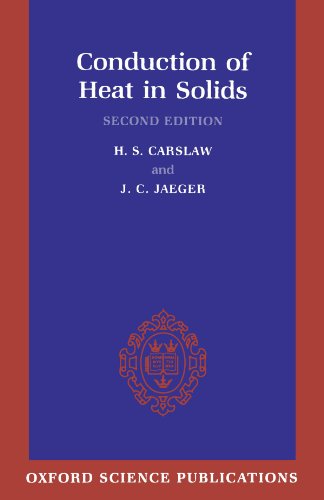Conduction of Heat in Solids pdf
Par schnell royal le mardi, août 9 2016, 22:36 - Lien permanent
Conduction of Heat in Solids. H. S. Carslaw, J. C. Jaeger

Conduction.of.Heat.in.Solids.pdf
ISBN: 0198533683,9780198533689 | 517 pages | 13 Mb

Conduction of Heat in Solids H. S. Carslaw, J. C. Jaeger
Publisher: Oxford University Press, USA
Liquids: Most of the liquids transfer heat very well. Conduction; that is, heat being transferred from a heated solid to an unheated solid. Conduction and Convection Conduction is most important in Solids. When one end of an object is supplied with thermal energy, the molecules gain kinetic energy and vibrate vigorously. It is also an efficient method of conduction in liquids, but occurs hardly at all in gases. Such bad conductors of heat are called insulators. Home made 6x7 tilt shift camera, tominon 127mm f4.7,red filter, Ilford PanF 50, Ilfosol3. Conduction is heat loss that happens between two solids that are in contact with each other. This is the primary method of heat transfer in solids and it works best of all in metals (because loosely bound electrons play a role). As they vibrate faster, they will collide with neighbouring particles making them vibrate too. Transfer of heat in solids is by conduction. This process of heat flow is called conduction and happens in solids such as metals.This is because the particles or atoms are close together. Houses lose a lot of heat through their windows even when they're shut. Convection; that is, the transfer of heat from one place to another through the movement of fluids or gases. In the event that heat transfer occurs through several solids, the above equation can be adapted by supplementing the solid's thickness (L) divided by its thermal conductivity (λ). For example, a spoon in a cup of hot soup becomes warmer because the heat from the soup is conducted along the spoon. The rate of heat loss on a cross bike will tend to be less than on a road bike, because the speeds are lower. Transfer of heat within a fluid is by convection. Conduction is most effective in solids-but it can happen in fluids. Students know heat flows in solids by conduction (which involves no flow of matter) and in fluids by convection (which involves flow of matter).